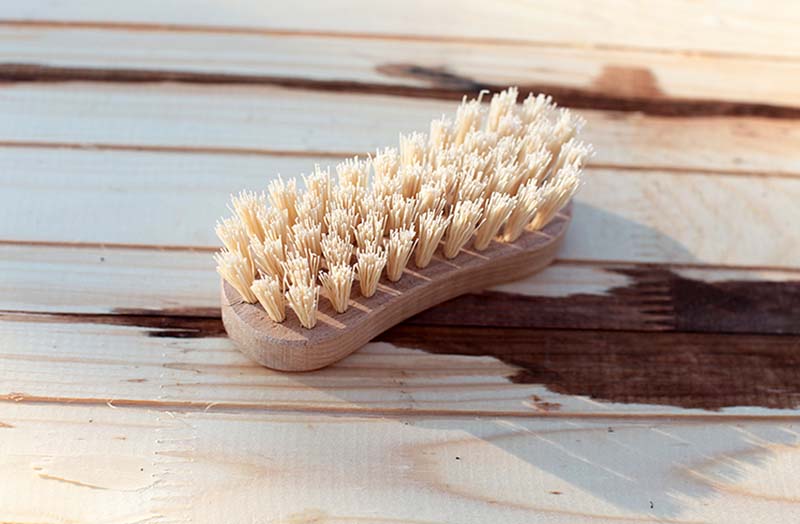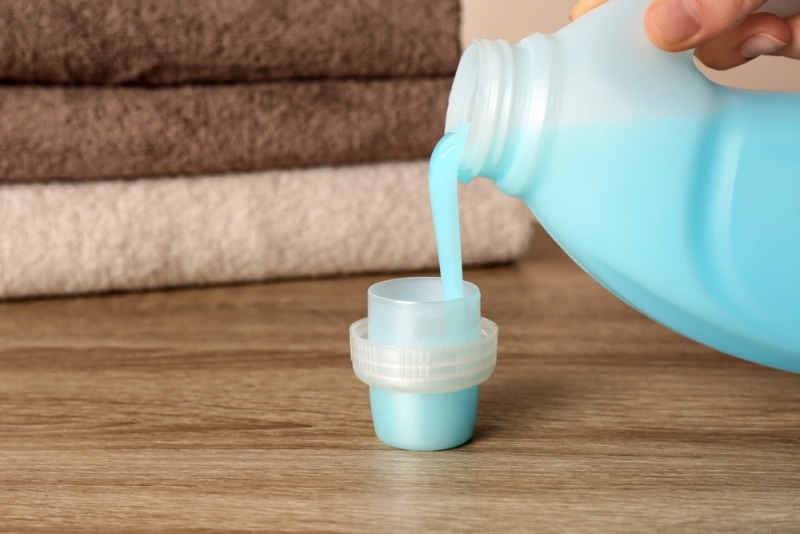How to Clean a Hammock the Right Way: 7 Easy Steps
-

- Last updated:

Hammocks are a universal symbol of relaxation, whether lazing in your backyard or on a sun-drenched tropical beach. The experience of lying on a hammock is unmatched, but so are all the stains, dirt, and mud that are a sign of its constant handling. Its outdoor placement means that dirt, rain, sunshine, pollen, and mildew will contaminate and mar its designed purpose, interrupting your hang time.
After a season of hanging a hammock, whether fabric, rope, or quilted, your hammock will require cleaning to serve you longer. As durable as these materials are, proper maintenance and care will result in stellar hang times that leave you or your loved ones better relaxed.
So here are the seven tips, dos, and don’ts of cleaning a hammock the right way.
 The 7 Steps to Better Cleaning of a Hammock
The 7 Steps to Better Cleaning of a Hammock
1. Always Inspect Your Hammock for Dirt, Stains, and Damage
Avoid the deterioration of your hammock, which can result in sudden tears or breaks- the best way to do this is by inspecting it each time before use. In winter, hammocks often go into storage, and retrieving them when the weather warms may require a thorough clean before you can hang them to dry.
Look out for worn, broken, or damaged material such as rope, string, or wooden spreaders or chains that will not safely support your body weight. You’ll also stay alert for creepy crawlies like spiders, moths, snails, and caterpillars that want to hang out without permission. Use a vacuum cleaner to lift pollen or insects off your hammock before washing, especially if you’re prone to allergies.
Stains don’t carry the same risks but watch out for mildew, which can be challenging to spot on a dirty hammock. If it’s of a hazardous type like black mold, it may cause respiratory reactions and skin irritation, besides discoloring the fabric.

2. Remove the Spreading Bar and Carabiners for Machine Wash Hammocks
Before starting your hammock cleaning process, remove the carabiners and spreading bar, especially if you plan to put them through a washing machine. Also, remove ropes if they’re removable, as they can tie around the fabric during a spin cycle.
Knitted hammocks require a gentle cycle with a small amount of cleaning detergent, which means no fabric softeners, bleach, or high temperatures. And don’t mix hammocks with other clothing.
If your hammock has non-removable spreading bars, ropes, and carabiners, it’s best to hand wash it rather than risk tears in the fabric.
- Fold the end loops and tie strings of the hammock and bring them together to prevent entanglement
- Place the folded hammock inside a pillow case and tie it closed
- Use a gentle wash cycle with mild detergent and cold water for rinsing
- Take the hammock out of the pillowcase after the spin cycle and unfold it for air-drying
3. Brush Down Your Hammock and Apply a Multipurpose Cleaner
Hand washing is the most effective and safest way to wash a hammock. If your hammock is made of delicate fibers, avoid being tempted to machine wash as the spin will ruin its fabric build and weave.
Use a brush with soft bristles, especially for varieties with irremovable spreader bars. You can hose down your hammock’s fabric to thoroughly wet it before applying the cleaning solution, targeting areas of dirt and stains. Still, use a hose to clean untreated cotton or nylon hammocks and then hand wash with a scrubbing brush.
Wash both sides and rinse it with water until your detergent solution comes off, or use a bucket of warm water while brushing off tough stains. Don’t use bleach or a fabric softener; scrub along the end strings with a soft-bristled brush until clean, and then hang to dry.

4. Avoid Pressure Washing Rope Hammocks
You may be tempted to use a pressure washer on your hammock for quicker results, but that will tear into the fabric. Hammocks are designed to support heavy weights but must be distributed evenly across their fibers and not pummeled with high-pressured water streams.
Using a water hose with normal pressure flow is best, especially if your hammock is made of delicate, gauzy material. You can also use a bucket or bathtub instead and wash it outdoors in a kid’s paddling pool, keeping irremovable spreader bars and O-rings out of the water if possible.
Rub the ropes together after systematically gathering them from one end of the hammock to the other, paying particular attention to stained or mildewy areas. Wipe down spreader bars using a clean cloth after thoroughly rinsing the hammock and spread it or hang it to air dry.
5. Use a Mild Detergent or Homemade Solution to Wash Your Hammock
Whether yours is a Brazilian, Mayan, or Nicaraguan hammock, you should take care when washing using industrial-strength detergents. You can create a unique mixture suitable for quilted and padded hammocks while hand or machine-washing them.
- One cup of washing soda
- A few squirts of dishwashing detergent
- One cup of borax
- Eight cups of water
You can rinse your hammock using water and two cups of this solution before starting your hand or machine-washing process, especially if it’s stained or mildewy.
Avoid using bleach or fabric softeners, and don’t set your machine wash to high temperatures when using this made-at-home detergent. Cool water won’t cause material shrinkage, making stains hard to remove or compromising fabric longevity.

6. Always Prefer Air-Drying for Your Hammock
While you can dry your hammock in a machine dryer, you’ll risk damaging synthetic materials or woolen fabrics. If you don’t have other options, like when the weather outside isn’t conducive, put your dryer on very low heat and then air dry even indoors.
It’s safer to hang the hammock outside to dry after washing, especially for mesh and nylon fabrics, although rope and untreated cotton can be tumble-dried. Tie hammocks across a clothesline with pegs to support weight, draping them across so they’re not touching the ground when it’s too heavy.
Put it out to dry immediately after washing it, as leaving it wet will cause material deterioration and provide a breeding ground for mold. For better airflow, dry hammocks spread over two clotheslines and put out spreaders and carabiners to dry.
7. Properly Fold and Store Your Hammock
Before folding your hammock, ensure it is fully dry since dampness encourages mildew growth and musty smells. The hammock’s type of fabric materials will determine how you fold it, just like with washing to maintain structural integrity and durability.
Also, keep in mind the presence of insects and other critters, such as moths, spiders, and rats, when folding your hammock for storage. These will nest and may gnaw or make use of your hammock fibers to lay eggs and breed, so avoid storing them outdoors.
Use a dry bag to store your hammock, especially the type that allows air passage, and find a cool, dry place for storage. Even for Mayan hammocks made of nylon fabric, consider storing them in suitable conditions to preserve their material integrity and maintain colors.
To fold your hammock without spreader bars, put one end over the other, tuck in the cords and hang the loops before rolling it up. You can secure Brazilian hammocks inside their pouches, while those with irremovable ropes can be rolled up and tied with a string.

 Tips for Cleaning Different Types of Hammocks
Tips for Cleaning Different Types of Hammocks
You should regularly clean your hammock, but not as much as you do regular laundry, as that’ll compromise its fibers and lessen its lifespan. Depending on the material your hammocks are made of, you’ll require different cleaning tips and techniques for removing stubborn or mildew stains.
- Rope Hammocks: Cleaning rope hammocks using hand washing, as they can become entangled during a machine spin cycle. Take the hammock and spread it out on a flat surface such as your deck, patio, or concrete driveway, and then scrub it down with warm water and your detergent solution. Once done, hose it down with cold water and rinse thoroughly before hanging it outdoors to dry. You must care for the wooden spreader to prevent cracking, splintering, or fading by refinishing it once in a while if you notice dullness.
- Camping Hammocks: Many camping hammocks are made of lightweight, thin materials, so you should be gentle when cleaning to avoid fabric damage. Wash your hammock by hand to keep it in pristine condition, or use a damp cloth with detergent to wipe down any dirt or stains. Remove any metal fasteners or carabiners present on your camping hammock before commencing your cleaning procedure. That’s because these can rip into the material, or moisture will attract corrosion, especially if not galvanized.
- Woven Hammocks: Wash Mayan and Brazilian woven hammocks by hand. Although those hammocks are made from durable fibers, they are susceptible to tear and wear. Avoid vigorous scrubbing when cleaning your woven one so you don’t damage the material. And you should tie each end together before washing with lukewarm water. Ensure that you hang them out to dry immediately after washing in an airy area, and place a supporting stick or broom handle to help dry the woven fabric. That also makes the hammock well stretched out to reduce the chances of material shrinkage.
- Quilted and Padded Hammocks: While not as delicate as other hammocks, the quilted varieties are designed for full outdoor use, and it’s best to clean them using a hose. Use a gentle detergent to scrub off stains using a soft-bristled brush before hosing the hammock down with cold water. If there are stubborn or mildew stains, lift them using a mild remover, which you’ll allow to sit for 10 to 15 minutes before rinsing. You can use a tumble dryer on quilted or padded hammocks, but if the weather permits, outdoor drying is recommended.
 Conclusion
Conclusion
Hammocks are essential outdoor accessories for relaxation, vacationing, and camping; they’ll last longer with proper care. Take the suggested steps when cleaning, drying, and folding your hammock for storage but limit the number of times you wash them, especially if you’re using a washing machine.
Featured Image Credit: Krakenimages.com, Shutterstock
Contents
 The 7 Steps to Better Cleaning of a Hammock
The 7 Steps to Better Cleaning of a Hammock